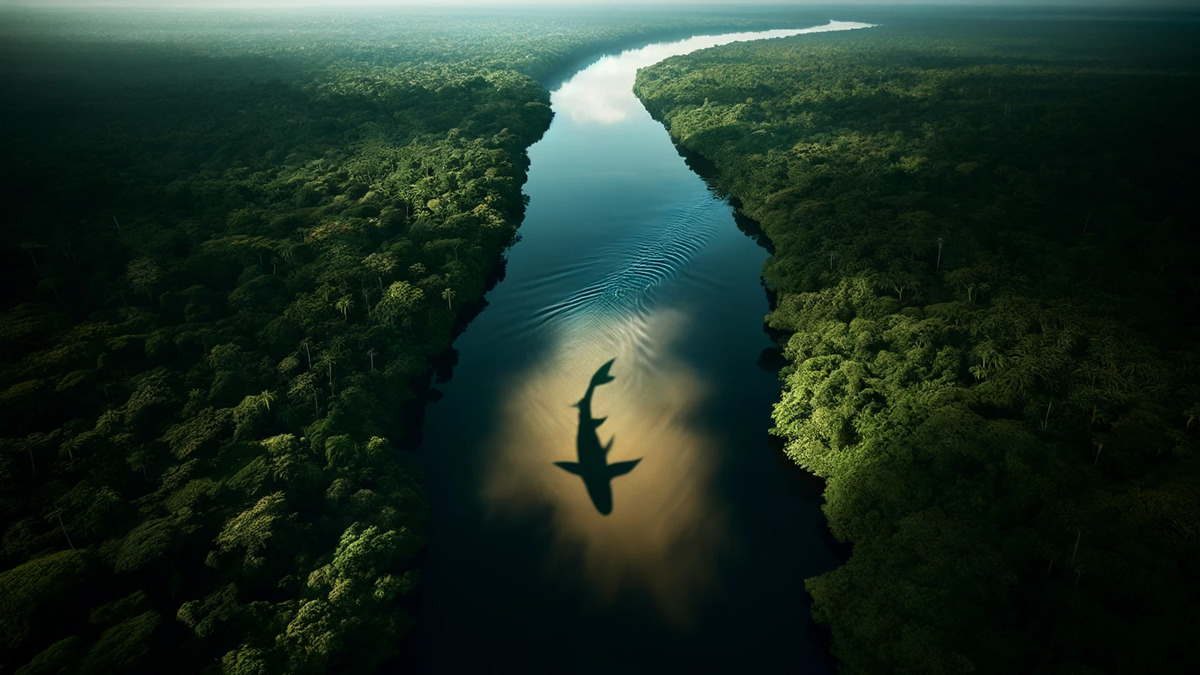World’s largest freshwater fish Blanca’s favourite
Pirarucu, the world’s largest freshwater fish.
Also known as Arapaima (Arapaima gigas). Also known as a pice.
It is also Blanca’s favourite fish in Street Fighter, Capcom’s historical fighting game that has recently released a new Street Fighter 6.
Leave that aside,
The pirarucu is not so scary for humans, despite its name like a piranha.
However, they are large and powerful. Fishermen and others need to be careful when catching them. Their scales are as large as 5 cm and they are also razor sharp and tough. If not handled properly, they can cause injury.
What do pirarucu eat?
They are mainly fish-eaters. Predominantly, because although they feed mainly on other fish species in the Amazon River, they are also known to eat small animals that get too close to the water’s edge. They also eat crustaceans if they are small. But basically they eat small fish.
Juvenile pirarucu also eat zooplankton and small invertebrates until they are larger.
They hunt in an ambush style, slowly emerging from the bottom of the water and swallowing fish near the surface. Pirarucu have an upward-facing mouth adapted for surface feeding, which allows them to do this.
Although they are powerful predators, they are not invincible in their ecosystem. Juvenile fish and, when small, giant otters and caimans are powerful enemies. And then there are humans. If you search for pirarucu on YouTube, for example, you’ll see people, like tourists, hoisting pirarucu up as fishing targets.
Pirarucu toughness, not just big
Adapted to the murky, oxygen-poor waters of the Amazon, pirarucu have developed the ability to breathe air using lung-like organs in addition to their gills. This ability allows them to survive in conditions that are impossible for other fish.
Furthermore, they are quite resilient to their environment, as they can withstand a wide range of pH conditions, from highly acidic to alkaline.
It rises to the surface to breathe air, but unlike many other Amazonian freshwater fishes, it can survive for 24 hours underwater.
What’s more, they have gills and a bladder that functions like lungs. Mature pirarucu have a special vascular network in their swim bladder. This not only allows them to breathe air, but also regulates their buoyancy.
Pirarucu vocalise. They are used for communication between individuals, especially during the breeding season, but males have been known to vocalise to ward off rivals or warn of danger.
They are usually silver in colour, but may turn green in clear waters. This is thought to help them blend into their surroundings and avoid predators.
Pirarucu life
They are generally diurnal and are most active during the day.
They generally do not form groups and are usually solitary. However, during the breeding season, they act in small groups.
Females of pirarucu are often larger than males.
During the spawning season, they breed in monogamous pairs.
After the female lays her eggs, the male takes care of them. They are often responsible for aerating the eggs with their fins. Afterwards, the male maintains the nest and protects the hatched young, a relatively rare behaviour in fish.
Pirarucu use in the Amazon
Pirarucu have played an important role in the culture of the indigenous peoples of the Amazon. They have used pirarucu as a food source to the extent that it is sustainable, while at the same time using its scales and bones for a variety of purposes.
Today, pirarucu meat, which is still considered tender and tasty, is highly prized throughout Brazil and often appears in local cuisine.
If we dare to write exhaustively, pirarucu leather also seems to be very strong and durable, and has in fact been used by local people as material for a variety of items, including leather goods such as boots and belts.
Decline in numbers in recent years
Currently facing major threats from overhunting and habitat destruction, the population has declined sharply in recent decades.
Populations have declined mainly due to overfishing.
Apart from being considered a delicacy and eaten, it is also caught for its scales, which are used in aquariums, private collectors’ collections and traditional crafts. Conservation efforts to protect the species include the establishment of protected areas in the Amazon River basin and, in some areas, catch quotas for sustainable fisheries.



コメント